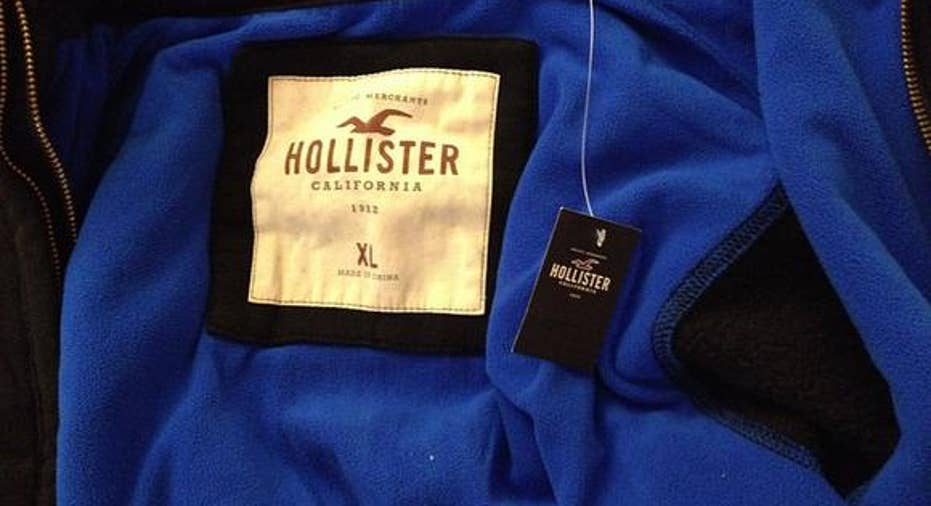If It Worked For Abercrombie & Fitch Co., Can It Work For Anyone?

Hollister has quickly become Abercrombie & Fitch's top brand, though whether the retailer can make a repeat performance remains to be seen.
Abercrombie & Fitch reported third quarter earnings that blew past analyst estimates, even among those that were expecting the teen retailer to post strong numbers.
While total sales were down 4% from last year, it was the impact of currency fluctuations that caused them to fall, and without that headwind revenues were flat. More importantly, its profits more than doubled year over year to $41.9 million, or $0.60 per share as it hit the brakes on being overly promotional. And as if that wasn't enough good news for investors, its Hollister brand recorded its first quarter of same store sales growth in almost four years.
Considering there were plenty of analysts that saw the retailer standing on its last legs, the dramatic turn in fortunes is remarkable. Yet going from the brink of financial ruin to industry racehorse, particularly when so many other retailers are posting dour earnings that drag down almost the entire sector, is curious.
The two most-talked about aspects ofAbercrombie's strategy include:
- Holding the line on discounting
- Remaking its Hollister brand into a fast-fashion house
Both seem to be working. Gross margins in the quarter increased to 63.7% from 62.2% a year ago as executive chairman Arthur Martinez told The Wall Street Journal the chain made "a conscious strategy to wean ourselves off heavy levels of promotions." And the Hollister brand saw its same store sales turn from a 12% plunge last year to a 3% rise this quarter. While that is a function of just how bad things were -- it was a really low bar to step over -- Hollister's comps have been moving in the right direction all year long as it adopted fast-fashion's construct ofquicklymoving fashion from the runways to store shelves.
Yet other retailers have tried these strategies without nearly the same success. Handbag maker Coach had to put the kibosh on many of its outlet stores as they were cannibalizing its full-price locations. Tweens clothing retailer Justice also is in the midst of a transition away from "gimmicky" sales to bolster profit margins, but is seeing sales collapse, while men's fashion leader Men's Wearhouseis struggling to put an end to the buy-one-get-three-free business model at its Jos. A. Bank division.
And these days everyone seems to want to be a fast-fashion retailer as the sustained growth of industry leaders like H&M and Zara has outstripped anything the rest of the retail industry has posted. Even stodgy department stores have announced plans to develop their own fast-fashion lines.
None of these efforts, though, have worked like they seemingly have for Abercrombie & Fitch. It seems there's some other secret in its sauce. And there is.
While everyone has noticed the retailer shift away from provocative advertising, it's really something more subtle that likely accounts for why Abercrombie is suddenly doing better than other teen retailers. It's the fact teens are no longer its target demographic!
In an interview with Business Insider, chairman Martinez said Abercrombie now "aim today to be a little further up the age curve," looking more to attract 18-year old to 25-year old shoppers.
He says those consumers have more sense of self and style, but he may as well have said they have more money too. The Bureau of Labor Statistics says unemploymentamong teens aged 16 to 19 is a horrendous 16% while for those aged 20 and older it's less than 5%.
It helps explain why the retailer has been able to successfully break away from the destructive cycle of discounting while introducing trendier fashions while a handful of rivalsbecame penny stocks and the latter went bankrupt. It's an age bracket that can respond to and support those initiatives.
That's not to say there aren't still hurdles for Abercrombie to surmount. Because inventory levels are climbing to worrisome heights just as the Christmas shopping season approaches, its competition is going to be even more promotional in a bid to clear out merchandise and attract shoppers.
Further, fast-fashion may have peaked. H&M is getting into makeup now while Uniqlo is slowing down its U.S. mall expansion. American Eagle Outfittersis consciously eschewing fast-fashion in favor of going upscale.
And the gains Abercrombie & Fitch's stock enjoyed may have had more to do with more than a third of its stock being sold short. As short sellers covered their positions, it pushed shares higher. There's still a lot of weakness in and around the retailer, even if it was able to cobble together an impressive quarter. Now comes the hard part: being able to put out another one next quarter. If it can, it may be a script other retailers wish to follow.
The article If It Worked For Abercrombie & Fitch Co., Can It Work For Anyone? originally appeared on Fool.com.
Rich Duprey owns shares of J.C. Penney Company,. The Motley Fool owns shares of and recommends Coach. Try any of our Foolish newsletter services free for 30 days. We Fools may not all hold the same opinions, but we all believe that considering a diverse range of insights makes us better investors. The Motley Fool has a disclosure policy.
Copyright 1995 - 2015 The Motley Fool, LLC. All rights reserved. The Motley Fool has a disclosure policy.